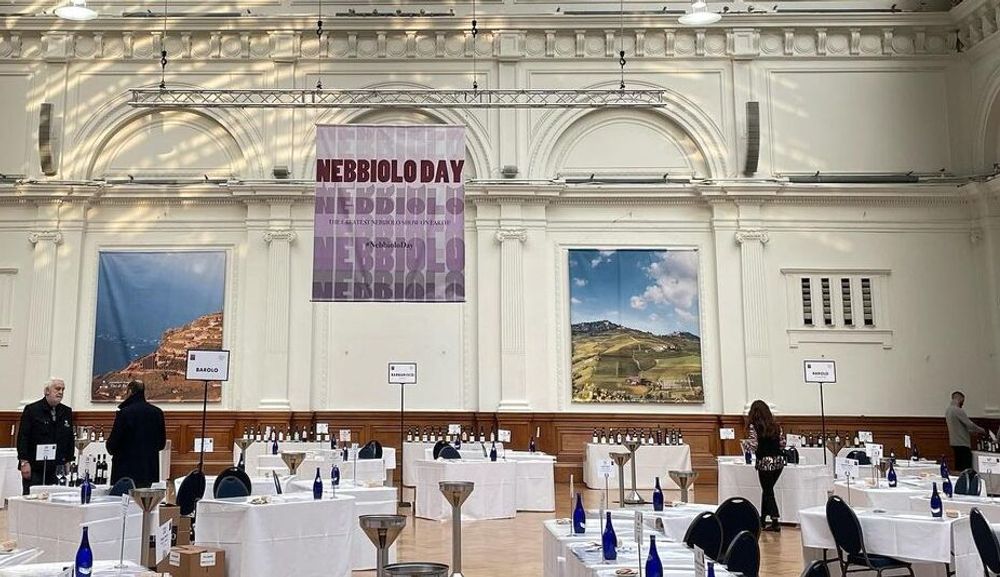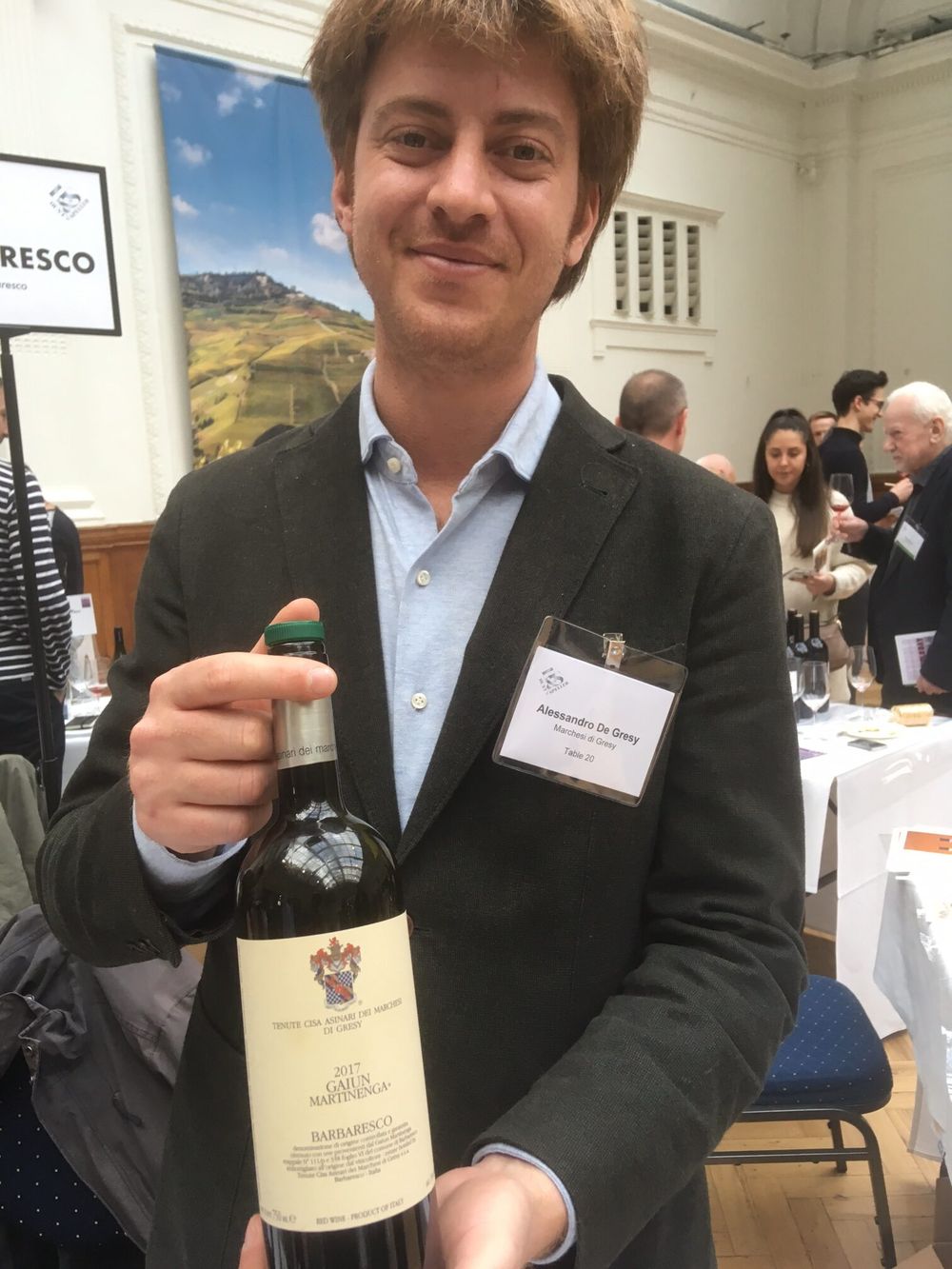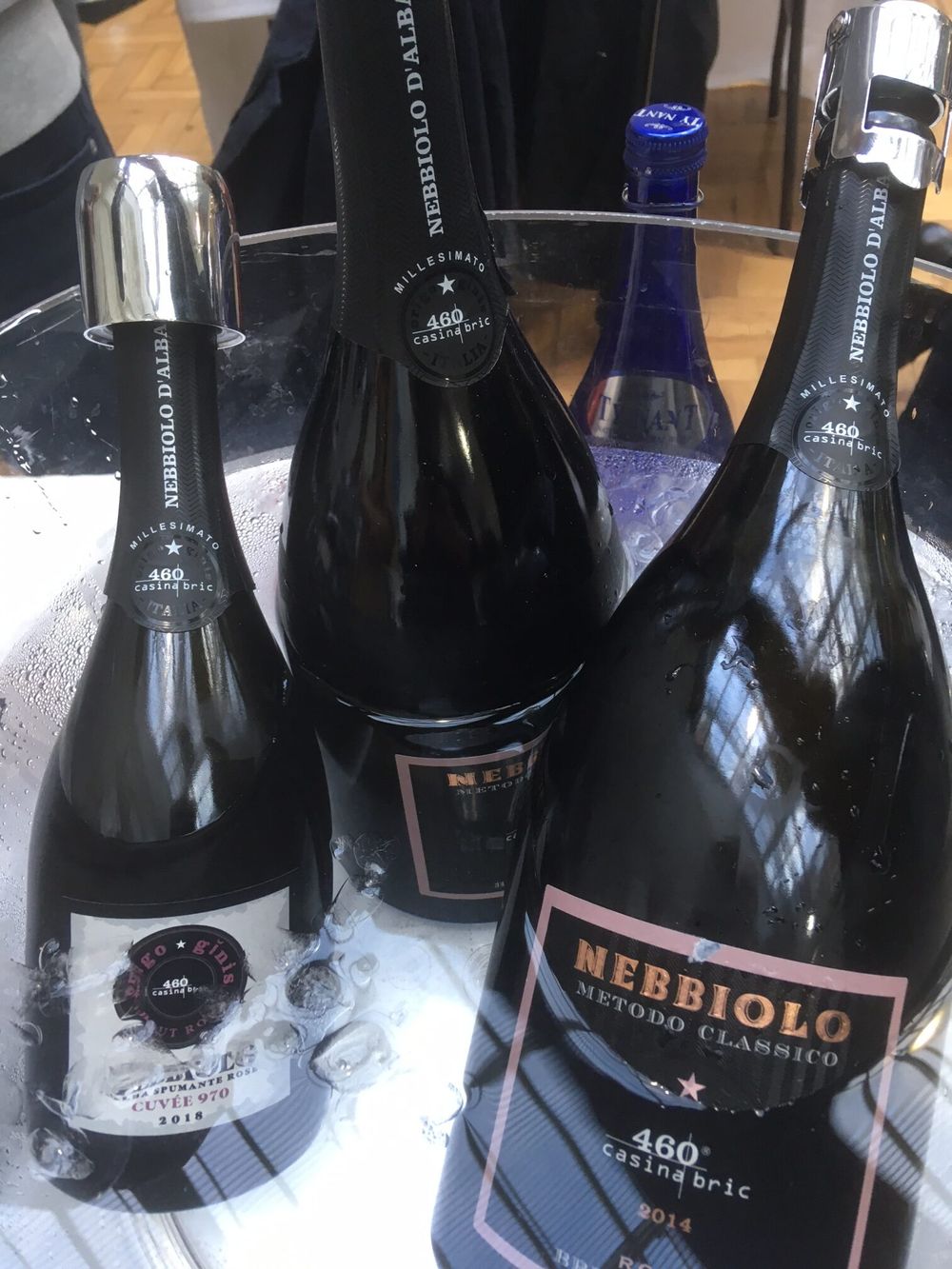“The 2020 Langhe Nebbiolo from Produttori di Barbaresco is a really well priced (£25) and super expressive wine, made to be drunk now, with lots of earthy, dark red fruit supported by elegant tannins and balanced acidity. A real joy, frankly at a time when we need that,” writes Keay.

Nebbiolo Day was a chance for UK buyers to discover one of Italy’s great calling cards
“With all that is unfolding in Ukraine, all that fear, tragedy and death, how can you just go to a wine tasting?” I asked myself as I was preparing to attend Nebbiolo Day 2022. I know I’m not alone in asking such questions right now – normal life has disappeared and with it the comforting reassurance that comes from doing regular things, like attending tastings if you’re in the trade. We’ve all seen the appalling images but for me, who has spent time in Ukraine and has clear memories of when it was a place of energy and hope, this brutal invasion just feels unbearable. But recalling that famous wartime slogan “Keep Calm and Carry On,” I set off for London’s Lindley Hall, feeling a little off-kilter admittedly. Perhaps the tasting might be a distraction, I told myself.
And so it proved, thanks to the efforts of Walter Speller and Jane Hunt MW, who organised this third annual tasting.
Nebbiolo Day 2022 was devoted to Italy’s most iconic grape, even if no one knows for sure why it’s named after the Italian word for fog (it’s either the whiteish hue that develops on the skin of this late ripening variety or the actual fog that rises around the typical harvest time in mid to late October), or why in Valtellina and Alto Piemonte it also goes under the local names of Picoutener, Spanna and Chiavennasca… although with Nebbiolo’s growing popularity these names are used less and less.
This tasting was actually planned for 2021 until Covid intervened; with a London Underground strike taking place this time around, on top of the war worries, there were fears that turnout would be impacted. All unfounded, as things turned out: attendee levels were pretty good, whilst winemaker turn-out was impressive, with 80 producers of Nebbiolo – from Piedmont’s Barolo, Barbaresco, Roero and Alto Piemonte and Lombardy’s Valtellina – in attendance, most showing typically five to six wines apiece.
Key producers
In terms of famous names, there were many familiar in UK on-trade listings including Oddero (imported by Justerini & Brooks) GD Varja (Liberty Wines), Marchesi di Barolo (Graspo & Vinissimus) the first producers of modern Barolo back in 1861, the mega-trendy and highly rated Ettore Germano (Astrum), Vietti (Bibendum), Ceretto (Mentzendorff) and Prunotto (Berkmann Wine Cellars) whilst from Barbaresco Marchesi di Cresy and Produttori di Barbaresco (arguably the world’s best cooperative) were similarly present and correct (no Gaja, of course, but who would expect that?).
With quite a few producers currently unrepresented in the UK also in attendance, that’s a lot of Nebbiolo’s two most famous attributes, tannin and acidity: my plan was to hunt out the more unusual and/or distinctive producers/wines and look out for the novel, without exhausting my palate. So what did I find?
“You will not leave here today until you are all Nebbiolistas,” promised Walter Speller at his masterclass on Valtellina and Alto Piemonte (including Gattinara and Bramaterra), sounding not unlike a Roger Moore-era Bond villain. Well it worked, with three of the wines he selected making my list.
The pick of the wines from Nebbiolo Day 2022
The Sfursat Carlo Negri 2018 from Nino Negri (Carson&Carnevale) in Valtellina was a great showcase of Valtellina’s heroic winemaking – on often incredibly steep vineyard terraces in a wine region that stretches some 40 kilometres across the roof of Lombardy, with Alpine Nebbiolo showing very differently to what comes from Piedmont – and of what is probably its most intriguing wine. Sforzato is an ancient wine style with dried grapes traditionally added to the wine to boost alcohol levels in these very high vineyards– no longer an issue with global warming obviously. At 15% the alcohol levels in this wine are fairly typical – although I tasted some 16% and 16.5% wines wandering around the Valtellina stands afterwards – but it doesn’t show in the wine, which is rich, very expressive and elegant on the palate. And much drier than an Amarone, a wine style many find can be excessively sweet and sometimes slightly artificial. Speller says Valtellina is making some of the most exciting wines in Italy right now and on the basis of this and the others I tried, I wouldn’t argue.

Two wines from Alto Piemonte, Cantine Garrone’s Prunent 2019 Valli Ossolane Nebbiolo (Ultravino) and Antoniotti Odilio’s 2018 Bramaterra (DBG Italia), from one of AP’s leading DOCs, illustrated the ongoing revival of this once oft-ignored region. The first made from the Prunent clone, comes from carefully tended pergola vines and is very expressive, showing great dark and red berry fruit with a long, dry finish; the Bramaterra from Antoniotti shows great dark red fruit and has good depth and complexity, reflecting the volcanic rock soil on which the grapes are grown.
“Italy’s best cooperative” Produttori del Barbaresco (Astrum Wine Cellars) is best known for its regular cuvée but the 2018 here – maybe because this was a difficult year vintage-wise – felt a bit closed to me. The Ovello Riserva 2017 – one of PdB’s cru wines – was showing rather better but still needs more time. Not so the 2020 Langhe Nebbiolo, a really well priced (£25) and super expressive wine, made to be drunk now, with lots of earthy, dark red fruit supported by elegant tannins and balanced acidity. A real joy, frankly at a time when we need that.
Diego Morra isn’t a name I’m particularly familiar with but it’s certainly one I will look out for after tasting their Monvigliero 2018 Barolo, a wonderfully rich and nuanced wine that will only get even better with time. Good structure, with light vanilla supporting dark brambly fruit, this was one of the more savoury wines I tried and all the better for it. Barolo with attitude.

Both the Marchesi di Gresy (Boutinot) wines from the highly regarded Martinenga cru were showing well, the Martinenga 2018 and the Martinenga Gaiun 2017, a wine from a different plot in the cru. Different vintages obviously but the differences in taste and style are remarkable, considering this is the same cru. The 2017 wins my vote, wonderfully rich and expressive, great dark berry and cherry flavours on a crunchy palate, and a long finish.
I haven’t tried many pink Nebbiolos, but they are increasing in popularity in Piedmont and the Al Posto del Fiori 2020 Coste della Sesia from Le Pianelle (Ester Wines) in AP’s Bramaterra was great; very aromatic and fruit forward, with a fresh but quite persistent finish. As per the rules of the Bramaterra denomination, this is actually 80% Nebbiolo – the maximum allowed – with 10% each of Croatina and Vespolina, autochthonous varieties which the authorities (and producers) are determined to keep alive.

With tiny production, tucked up in the mountains, Mamete Prevostini (Alpine Wines) has a great range, including a wonderfully fruity but dry Sforzato, the Corte di Cama 2018 checking in with a cool 16% alcohol, which you really didn’t taste (though that may have been me by this time). The one to buy here is La Cruus 2018 Valtellina Superiore Inferno, from the warmest area of the region, with vineyards at 600m. Hand-picked grapes and two years of ageing make this a delicious wine, brambly red and dark fruit and soft warm tannins. Recommended.

Italians love their spumante so it’s probably no surprise that sparkling Nebbiolo is becoming a thing and 460 Casina Bric (imported by Les Caves de Pyrene but not yet the sparkling) has two, the Cuvee 970 2018 Nebbiolo d’Alba Spumante made by the “long” Martinotti method and the 2014 Nebbiolo d’Alba Spumante Brut Nature Metodo Classico, which spent 16 months on lees before being bottled and stored. Both were appealing but my money would go to the second, slightly saline wine, but with a wonderfully rich mousse and just the right amount of acidity. OK, not a great wine but a lovely palate cleanser before my last wine which was…

Ettore Germano’s Lazzarito 2015 Barolo Riserva. This Serralunga D’Alba estate is one of the oldest in the Barolo region and the Lazzarito cru one of the highest regarded, with vines dating back 90 years; Sergio Germano’s parcel is south-west facing and this one was really delicious, extremely fruit intensive with cinnamon, orange peel and dark berry fruit on the palate, dark red, almost brown in colour.
As I wound my way home, bracing myself for the horrors on Channel 4 News, I read through the hefty brochure again. “This third edition of Nebbiolo Day hopes to cement Nebbiolo’s reputation and success in the UK market”.
It certainly did that with some truly great wines from all the producing regions and further affirming the primacy – in my mind – of the grape in Italy’s wine firmament.
































